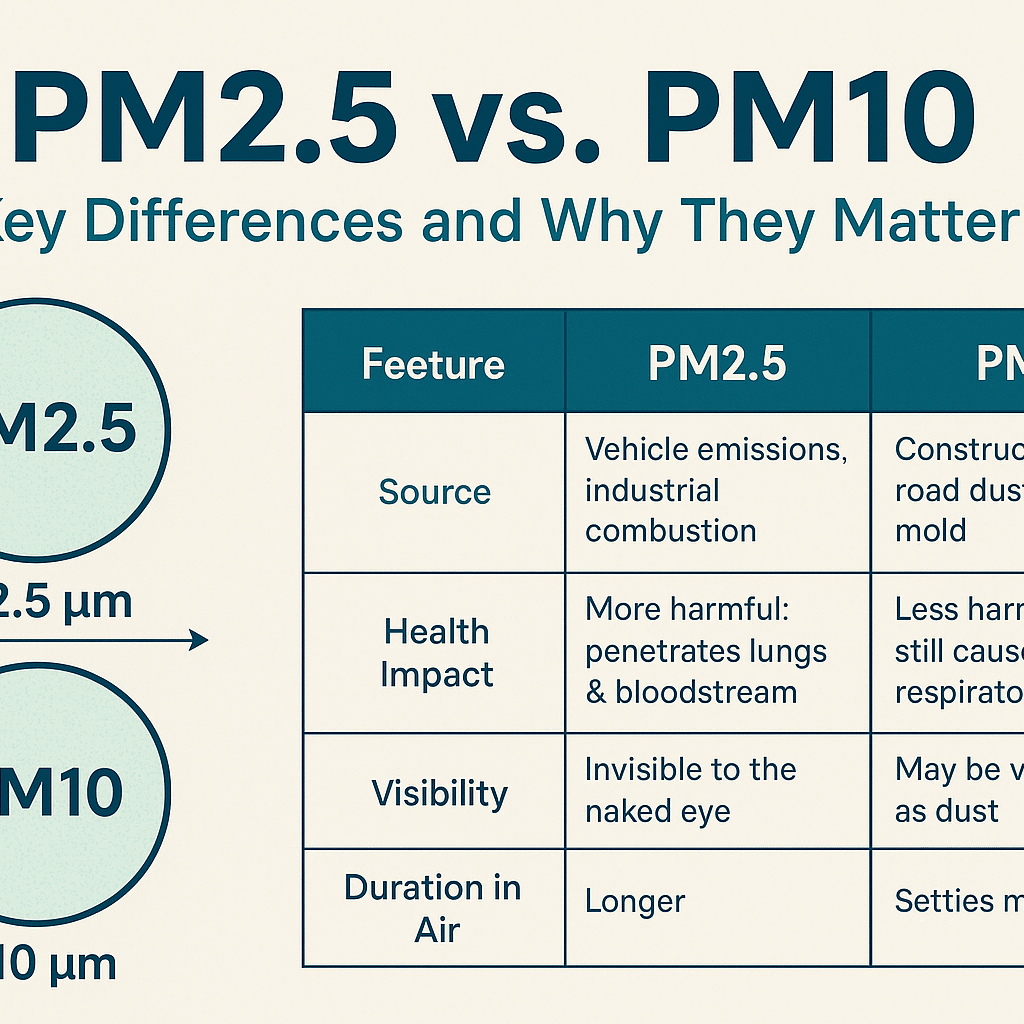
Air pollution is one of the most pressing environmental health challenges of our time, and two terms you’ll often encounter when discussing air quality are PM2.5 and PM10. Understanding the difference between these pollutants is crucial for both individuals and communities who want to take informed action toward cleaner air and healthier living. In this blog post, we’ll break down what PM2.5 and PM10 are, how they differ, and why it’s important to monitor them—especially with smart air quality solutions like those offered at airatomsmartsolution.com.
What Are PM2.5 and PM10?
PM stands for Particulate Matter, a mixture of solid particles and liquid droplets suspended in the air. These particles vary in size, and the numbers 2.5 and 10 refer to the diameter of the particles in micrometers (µm).
PM10: Includes particles with a diameter of 10 micrometers or less. These are often referred to as “inhalable particles,” which can enter the nose and throat but may not always reach deep into the lungs.
PM2.5: These are fine particles with a diameter of 2.5 micrometers or less. Due to their tiny size, PM2.5 particles can penetrate deeper into the lungs and even enter the bloodstream.
Key Differences Between PM2.5 and PM10
| Feature | PM2.5 | PM10 |
|---|---|---|
| Size | ≤ 2.5 µm | ≤ 10 µm |
| Source | Vehicle emissions, industrial combustion, wildfires | Construction sites, road dust, pollen, mold |
| Health Impact | More harmful: penetrates lungs & bloodstream | Less harmful, but still causes respiratory irritation |
| Visibility | Invisible to the naked eye | May be visible as dust |
| Duration in Air | Longer | Settles more quickly |
Why PM2.5 and PM10 Matter
Understanding PM2.5 and PM10 is not just academic—it has real-world implications for your health, safety, and quality of life:
Health Risks: Long-term exposure to PM2.5 is linked to heart attacks, strokes, asthma, and reduced lung function. PM10, though larger, can still cause respiratory irritation and exacerbate existing conditions.
Air Quality Index (AQI): These particles are key components of AQI measurements. Monitoring PM levels helps determine the air’s safety and when it’s advisable to stay indoors or wear a mask.
Indoor Air Pollution: Many people assume staying indoors is enough. However, PM2.5 can infiltrate homes through windows and HVAC systems. That’s why monitoring indoor air is just as critical as outdoor.
Smart Monitoring with AirAtom Smart Solution
At airatomsmartsolution.com, we specialize in smart air quality monitoring solutions that help individuals, businesses, and institutions track PM2.5 and PM10 levels in real-time. Our advanced sensors and IoT-based devices provide accurate data that empowers you to take action—whether it’s turning on an air purifier, improving ventilation, or alerting your community.
By choosing AirAtom Smart Solution, you’re not just investing in technology—you’re investing in healthier air for your home, office, and city.

 Cart is empty
Cart is empty
Leave A Comment